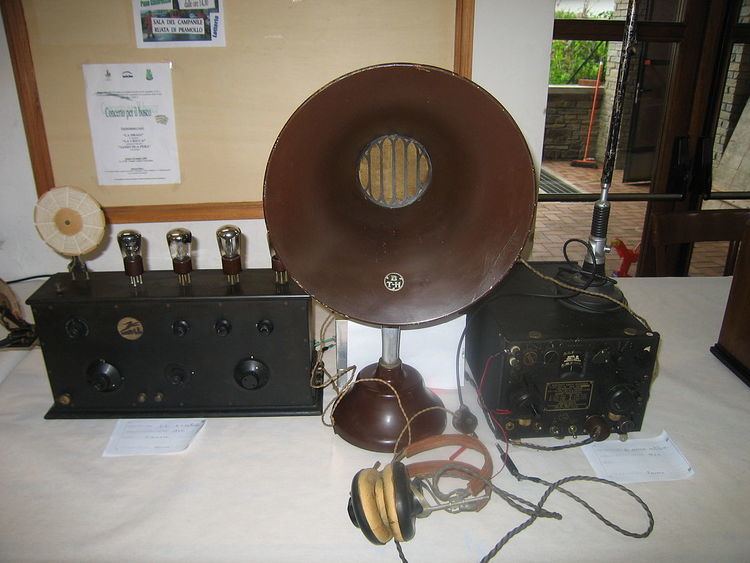 | ||
The birth of public radio broadcasting is credited to Lee de Forest who transmitted the world’s first public broadcast in New York City on January 13, 1910. This broadcast featured the voices of Enrico Caruso and other Metropolitan Opera stars. Members of the public and the press used earphones to listen to the broadcast in several locations throughout the city. This marked the beginning of what would become nearly universal wireless radio communication.
Contents
Date
A 1907 Lee De Forest company advertisement said,
It will soon be possible to distribute grand opera music from transmitters placed on the stage of the Metropolitan Opera House by a Radio Telephone station on the roof to almost any dwelling in Greater New York and vicinity ... The same applies to large cities. Church music, lectures, etc., can be spread abroad by the Radio Telephone.
Several years later, on January 13, 1910, the first public radio broadcast was an experimental transmission of a live Metropolitan Opera House performance by several famous opera singers. This transmission was arranged by Lee de Forest.
Performers
The wireless radio broadcast consisted of performances of Cavalleria Rusticana and Pagliacci. Riccardo Martin performed as Turridu, Emmy Destinn as Santuzza, and Enrico Caruso as Canio. The conductor was Egisto Tango. This event is regarded as the birth of public radio broadcasting.
The New York Times reported on January 14, 1910:
Opera broadcast in part from the stage of the New York City Metropolitan Opera Company was heard on January 13, 1910, when Enrico Caruso and Emmy Destinn sang arias from Cavalleria Rusticana and I Pagliacci, which were "trapped and magnified by the dictograph directly from the stage and borne by wireless Hertzian waves over the turbulent waters of the sea to transcontinental and coastwise ships and over the mountainous peaks and undulating valleys of the country." The microphone was connected by telephone wire to the laboratory of Dr. Lee De Forest.
Receivers
The few radio receivers able to pick up this first-ever "outside broadcast" were those at the De Forest Radio Laboratory, on board ships in New York Harbor, in large hotels on Times Square and at New York city locations where members of the press were stationed at receiving sets. Public receivers with earphones had been set up in several well-advertised locations throughout New York City. There were members of the press stationed at various receiving sets throughout the city and the public was invited to listen to the broadcast.
The experiment was considered mostly unsuccessful. The microphones of the day were of poor quality and could not pick up most of the singing on stage. Only off-stage singers singing directly into a microphone could be heard clearly. The New York Times reported the next day that static and interference "kept the homeless song waves from finding themselves".
Lee De Forest's Radio Telephone Company manufactured and sold the first commercial radios in the demonstration room at the Metropolitan Life Building in New York City for this public event.
Transmitter
The wireless transmitter had 500 watts of power. It is reported that this broadcast was heard 20 km away on a ship at sea. The broadcast was also heard in Bridgeport, Connecticut.
Early music transmission
The very first transmission of music by radio is credited to one Dr. Nussbaumer of the University of Graz in 1904, however it was not to the public. He yodeled an Austrian folk song into an experimental transmitter which was received in the next room at the university where he worked. He does not show in any standard scientific reference works.
Lee De Forest produced a program broadcasting opera phonograph records from the Eiffel Tower in Paris in 1908. This was just an experimental stunt for other nearby hobbyists and not considered a public broadcast as the public had no access to receivers at the time. At one point, when testing the radiotelephone for the Navy, Lee de Forest played patriotic phonograph music as the ships entered the harbor.
